History was made by 43 Kids by memorizing and Chanting 700 Verses of Bhagavad Gita with the Divine Blessings of Sri Ganapathy Sachchidananda Swamiji-Part 2
Part 1 of the article can be accessed by clicking on the link:
https://www.savetemples.org/2016/09/07/history-was-made-by-43-kids-memorizing-and-chanting-700-verses-of-bhagavad-gita/
The Power of Mantras
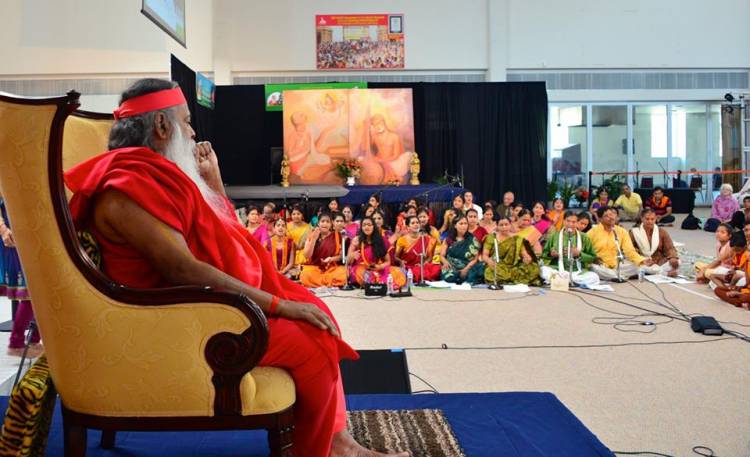 Every word, a combination of words, a sentence, or a verse when uttered in a particular manner will become a powerful mantra. Mantra means “revealed sound.” “Man” means mind and “trai” means liberate. Mantra also means to liberate the mind. They are revealed to the ancient rishis and other enlightened people when they are in deep meditation. They are uttered for spiritual as well as material purposes. The aim of chanting the mantras is to achieve the purushardas in life such as dharma (religious righteousness and duty), artha (economic needs and fulfilment desires), kama (procreative needs and sensual satisfaction) and moksha (salvation from birth and rebirth). These mantras possess magical or divine power enabling the utterer to achieve the potential desires. Mantra consist of six aspects: a rishi or a guru, a raga or melody, the Devata or presiding deity, a bija or seen sound, the Sakti or power, and a kilaka or pillar, as per Swami Sivananda Radha.
Every word, a combination of words, a sentence, or a verse when uttered in a particular manner will become a powerful mantra. Mantra means “revealed sound.” “Man” means mind and “trai” means liberate. Mantra also means to liberate the mind. They are revealed to the ancient rishis and other enlightened people when they are in deep meditation. They are uttered for spiritual as well as material purposes. The aim of chanting the mantras is to achieve the purushardas in life such as dharma (religious righteousness and duty), artha (economic needs and fulfilment desires), kama (procreative needs and sensual satisfaction) and moksha (salvation from birth and rebirth). These mantras possess magical or divine power enabling the utterer to achieve the potential desires. Mantra consist of six aspects: a rishi or a guru, a raga or melody, the Devata or presiding deity, a bija or seen sound, the Sakti or power, and a kilaka or pillar, as per Swami Sivananda Radha.
Heinrich Zimmer defined mantra as “A word or formula …. Which represents a mental presence or energy; by it something is produced, crystalized, in the mind. The term mantra Shakti is employed to denote this magic power possessed by words when they are brought together in a formula.” Sanskrit mantra, when chanted with proper sound vibrations and proper utterance, will have specific effect on the mind and body.
 The power of Mantras is amply described by Judith Tyberb. She observed that, “Its every alphabet is a Mantra, a sound or phrase of spiritual significance and power… The language is constructed inharmonious relation with the very truths of existence, hence its power of illumination … that every word or sound (shabda) has a power (Shakti). This intrinsic power can always convey the sense that is inseparably related to the sound … In the sacred Sanskrit scriptures this power was not only intuitively expressed but consciously wielded. And the power was not only of the human mind but of the Spirit.” As per the tradition, initiation into mantra is given by the guru, one’s mother or revelation. A mantra can never be bought or sold. When a guru gives a mantra it is never based on a monetary transaction. A mantra obtained in such a way will never have any power.
The power of Mantras is amply described by Judith Tyberb. She observed that, “Its every alphabet is a Mantra, a sound or phrase of spiritual significance and power… The language is constructed inharmonious relation with the very truths of existence, hence its power of illumination … that every word or sound (shabda) has a power (Shakti). This intrinsic power can always convey the sense that is inseparably related to the sound … In the sacred Sanskrit scriptures this power was not only intuitively expressed but consciously wielded. And the power was not only of the human mind but of the Spirit.” As per the tradition, initiation into mantra is given by the guru, one’s mother or revelation. A mantra can never be bought or sold. When a guru gives a mantra it is never based on a monetary transaction. A mantra obtained in such a way will never have any power.
Mantra is a condensed form of spiritual energy of the divinity. Pandit Rajmani Tigunait says, “The yogic scriptures often compare mantra to a boat or a bridge that an aspirant can take to cross the mire of delusion created by the external world and reach the center of consciousness within. Mystics and yogis say that mantra is an eternal friend who accompanies the meditator even after death, lighting the way in the realm where the light of the sun and the moon cannot penetrate. According to the more esoteric literature of the yoga tradition, mantra is the essence of guru shakti, the power of the spiritual master. In other words, the mantra is itself the guru. Mantra, God, guru, and one’s highest self are identical.”
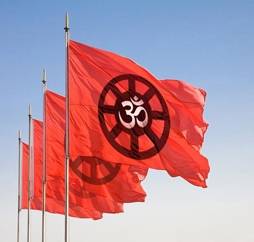 Sanskrit mantras are recited by millions of Hindus – they could be just one letter mantra or a combination of any number of letters. All temple functions are conducted entirely in Sanskrit starting from waking up the Deity until the night where the Gods are retired for the day. Homas are conducted on a regular basis. Agnihotras are conducted across the globe by chanting appropriate Sanskrit mantras. Similarly, mantras are chanted during all sixteen Samskaras starting with the birth of a child to the last stage of life.
Sanskrit mantras are recited by millions of Hindus – they could be just one letter mantra or a combination of any number of letters. All temple functions are conducted entirely in Sanskrit starting from waking up the Deity until the night where the Gods are retired for the day. Homas are conducted on a regular basis. Agnihotras are conducted across the globe by chanting appropriate Sanskrit mantras. Similarly, mantras are chanted during all sixteen Samskaras starting with the birth of a child to the last stage of life.
Even chanting of one word “OM” creates sound of cosmic creation that pervades the universe. Chanting of a given mantra“activates the stomach, spinal cord, throat, nasal and bran regions. It activates prana that will move from the base all the way up to the brain, thereby channelizing energy and activating the spinal cord and brain. Its continuous chanting will shift the attention and echo the harmonic relationship of every vital organ, our heartbeat, breathing, brain wave pulsing, neuron cells, metabolic, enzymatic and hormonal rhythms, and will bust stress, addictions and improve behavior. It acts as brain stabilizer, and by practicing it, one can enter into one’s own natural state.” (Vijay Hashia)
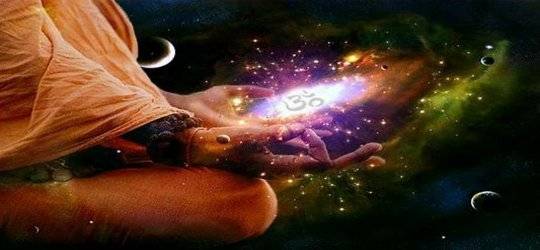 Benefits of Chanting OM/ Slokas
Benefits of Chanting OM/ Slokas
Gives strength & stability to the mind to handle conflicts
Fills the mind with light and brings in a ray of hope
Helps in dealing with unexpressed emotions by opening the channels of communication
Helps in stress management by bringing about creative will, abundant wisdom and right action.
Eliminates the root cause of Stress, Anxiety and Depression
Stimulates both the used and unused cells of the brain and increase your memory.
Enhances the capabilities of mind to focus, retain & recollect information
Enhances Intelligence and improves memory power.
Helps cultivate superior thoughts
Rejuvenates the brain and helps to shed unnecessary stress and mental fatigue
Reduce the stress by maintaining the blood pressure. The immunity of the body gets strong.
Improves the production of endorphin and makes you feel relaxed.
Decreases the adrenaline levels and reduces stress by providing more oxygen to the body.
Slows down the heartbeat and dilates the blood vessels to provide more oxygen to the body.
Creates vibrations in the body which increases the effectiveness of the spinal cord.
Creates vibration in the throat and benefits the thyroid glands.
Revitalizes the mind by improving memory, concentration and grasping power. It provides relief
from stress-giving headaches.
Regular chanting of mantras increases serotonin production in our body- a hormone which influences our mood and behavior. An inadequate supply of serotonin in our body can lead us to a state of depression and can also cause obesity, insomnia and headaches. It can help us in resolving the deepest of neuroses, fears and conflicts which cause ill-health and stress in us. It also increases the activities of natural killer-cells which help our body in destroying many types of harmful bacteria as well as cancer cells. It is especially appropriate for pregnant women to chant mantras as it puts them in tune with their babies.(Aditi Swami, The Viewspaper, Jan 13 2010)
Why Bhagavad Gita?
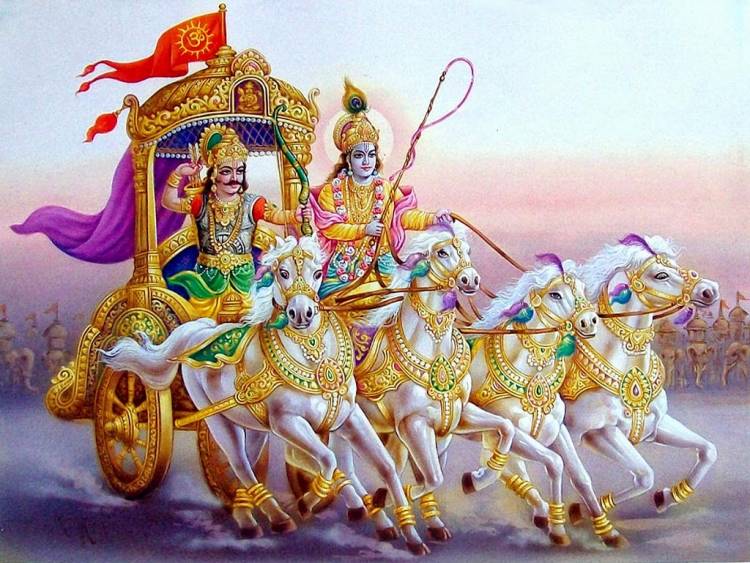 Of all the thousands of scriptures, why did Sri Ganapathy Sachchidananda Swamiji selected Bhagavad Gita to be chanted by children? It reflects one of the forms of the perennial philosophical systems that embodies those universal truths that are eternal with no physical boundaries and no time limitations. Bhagavad Gita would equip the children, youth and children to cope with the challenges they face in life, trials and tribulations they encounter on a daily basis, problems they meet in the modern world, frustrations they may be bumped into the competitive world of work, adjustment they have to make in the family life, ancient wisdom they may use to differentiate between the dharmic and adharmic values, and stress they may face in their hectic, hurried and materialistic world. Bhagavad Gita would teach the high morals that promote peace and harmony. Bala Gangadhar Tilak observed, “The most practical teaching of the Gita, and one for which it is of abiding interest and value to the men of the world with whom life is a series of struggles, is not to give way to any morbid sentimentality when duty demands sternness and the boldness to face terrible things ... It is my firm conviction that it is of utmost importance that every man, woman and child of India understands the message of the Gita.”
Of all the thousands of scriptures, why did Sri Ganapathy Sachchidananda Swamiji selected Bhagavad Gita to be chanted by children? It reflects one of the forms of the perennial philosophical systems that embodies those universal truths that are eternal with no physical boundaries and no time limitations. Bhagavad Gita would equip the children, youth and children to cope with the challenges they face in life, trials and tribulations they encounter on a daily basis, problems they meet in the modern world, frustrations they may be bumped into the competitive world of work, adjustment they have to make in the family life, ancient wisdom they may use to differentiate between the dharmic and adharmic values, and stress they may face in their hectic, hurried and materialistic world. Bhagavad Gita would teach the high morals that promote peace and harmony. Bala Gangadhar Tilak observed, “The most practical teaching of the Gita, and one for which it is of abiding interest and value to the men of the world with whom life is a series of struggles, is not to give way to any morbid sentimentality when duty demands sternness and the boldness to face terrible things ... It is my firm conviction that it is of utmost importance that every man, woman and child of India understands the message of the Gita.”
Sri Swamiji wanted to impress upon the children the timeless and universal Gita can offer them for the rest of their life by learning the basic principles of life that will shape, guide and mold their personalities. One would learn about discharging his own dharma, doing his responsibility with no attachment for the fruits of the action, establishing the balance between material and spiritual fields, importance of Sadguru in one’s own life, learning the art of maintaining sthithipragna (controlling the mind), the virtues of freedom and independence, acquiring the courage and strength in face of distraught and hopelessness, and handling with the confusion and troubles that beset the modern world.
The relevance and importance of Bhagavad Gita is emphasized by Ananda K Coomaraswamy,"....We must, however, specially mention the Bhagavad Gita as probably the most important single work ever produced in India; this book of eighteen chapters is not, as it has been sometimes called, a "sectarian " work, but one universally studied and often repeated daily from memory by millions of Indians of all persuasions; it may be described as a compendium of the whole Vedic doctrine to be found in the earlier Vedas, Brahmanas, and Upanishads, and being therefore the basis of all the later developments, it can be regarded at the focus of all Indian religion.”
1. Dharma Reigns
 Bhagavad Gita starts with the word dharma which is defined as duty, responsibility, principle, and to hold together. When Sanjay started narrating the story, he used the word dharma to make Dhritarashtra reflect on his responsibility in this Kurukshetra where a number of religious activities have been conducted to preserve the customs and traditions. When Arjuna was despondent of the consequences of the war that may result in the death of many people, he seeks the advice of Lord Krishna who realized the Arjuna’s weakness of heart and feebleness. Lord tell Arjuna, it is his responsibility to fight by saying, “And even considering your personal dharma as well, it is not right for you to hesitate. There is nothing better for a warrior than a fight based on dharma.” (2.31). If you fail to execute your dharma for personal reasons, you shall incur sin. Those who perform their duty are very close to the Lord. “But those who fully honor this immortal nectar of dharma as it has been spoken [by Me], having faith, taking Me as supreme—those devotees are exceedingly dear to Me.” (12.20)
Bhagavad Gita starts with the word dharma which is defined as duty, responsibility, principle, and to hold together. When Sanjay started narrating the story, he used the word dharma to make Dhritarashtra reflect on his responsibility in this Kurukshetra where a number of religious activities have been conducted to preserve the customs and traditions. When Arjuna was despondent of the consequences of the war that may result in the death of many people, he seeks the advice of Lord Krishna who realized the Arjuna’s weakness of heart and feebleness. Lord tell Arjuna, it is his responsibility to fight by saying, “And even considering your personal dharma as well, it is not right for you to hesitate. There is nothing better for a warrior than a fight based on dharma.” (2.31). If you fail to execute your dharma for personal reasons, you shall incur sin. Those who perform their duty are very close to the Lord. “But those who fully honor this immortal nectar of dharma as it has been spoken [by Me], having faith, taking Me as supreme—those devotees are exceedingly dear to Me.” (12.20)
In the first chapter it is clearly stated that there is a conflict of duties within all of us not knowing which course of action to take. Arjuna was in confusion and agony and not in a position to make a righteous decision. Lord Krishna talks about the eternal nature of soul, and says that one is not responsible for the consequences of discharging his dharma. “Even a very small amount of this dharma saves one from great danger, for there is no loss in such an endeavor, and it knows no diminution.” (Bg. 2.40). One has to follow his dharma in order to preserve and protect the very nature of existence.
2. Importance of Sadguru
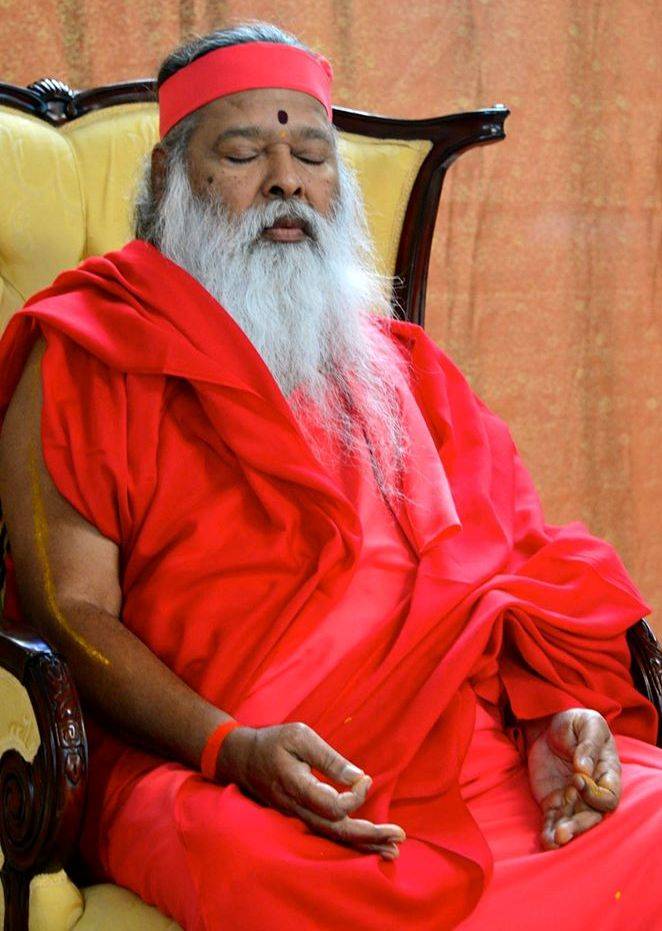 Sadguru Tattva permeates the entire cosmos as per Hindu scriptures. Guru is essential for spiritual growth and his advice, guidance and knowledge is sought by the disciples for many millennia. Guru is the one who can remove the ignorance by lighting the lamp of knowledge in the heart of the disciple. Sri Ganapathy Sachchidananda Swamiji says, “By mere touch the Guru transforms “Manava” (man) into “Madhava” (God). By his mere look “nara” (human) becomes “Narayana” (God) and “Jeeva (soul) realizes its identity with “Ishwara” (God). The land trodden by the Guru becomes a place of pilgrimage. By mere sight he transforms mud into delicious food and stone into glittering gold … There is nothing in this world that cannot be obtained by Guru’s grace.” Guru is indeed a friend in need, especially when our mind is fogged by ignorance, confused by turmoil, and disoriented with indecision. Guru is the only person who can come to the rescue.
Sadguru Tattva permeates the entire cosmos as per Hindu scriptures. Guru is essential for spiritual growth and his advice, guidance and knowledge is sought by the disciples for many millennia. Guru is the one who can remove the ignorance by lighting the lamp of knowledge in the heart of the disciple. Sri Ganapathy Sachchidananda Swamiji says, “By mere touch the Guru transforms “Manava” (man) into “Madhava” (God). By his mere look “nara” (human) becomes “Narayana” (God) and “Jeeva (soul) realizes its identity with “Ishwara” (God). The land trodden by the Guru becomes a place of pilgrimage. By mere sight he transforms mud into delicious food and stone into glittering gold … There is nothing in this world that cannot be obtained by Guru’s grace.” Guru is indeed a friend in need, especially when our mind is fogged by ignorance, confused by turmoil, and disoriented with indecision. Guru is the only person who can come to the rescue.
When Arjuna approached Lord Krishna by saying, “My heart is overpowered by the taint of pity, my mind is confused as to duty. I ask Thee: tell me decisively what is good for me. I am Thy disciple. Instruct me who has taken refuge in Thee.” (2:7). Knowing fully well about the nature of Guru who knows about both illusion and truth, and whose mission is to help his devotees to overcome the ignorance and darkness by imparting the knowledge and truth, Lord Krishna tells Arjuna the method to find a Guru and surrender. Sri Krishna Himself tells that, "Just try to learn the truth by approaching a spiritual master. Inquire from him submissively and render service unto him. The self-realized soul can impart knowledge unto you because he has seen the truth."(4:34).
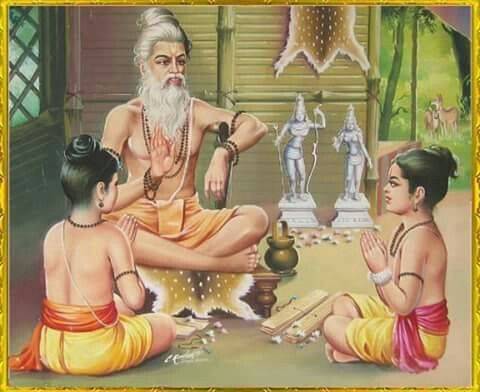 If we are very serious about understanding the science of God is a guru required. We should not try to keep a guru as a matter of fashion. One who has accepted a guru speaks intelligently. He never speaks nonsense. That is the sign of having accepted a bona fide guru. We should certainly offer all respect to the spiritual master, but we should also remember how to carry out his orders.
If we are very serious about understanding the science of God is a guru required. We should not try to keep a guru as a matter of fashion. One who has accepted a guru speaks intelligently. He never speaks nonsense. That is the sign of having accepted a bona fide guru. We should certainly offer all respect to the spiritual master, but we should also remember how to carry out his orders.
Following the Lord Krishna’s message to Arjuna to carry his dharma in discharging his duties, Arjuna’s ignorance due to delusion, passion, attachments and perception of consequences was removed. He realized that it was his foolishness and childishness to think that he would be responsible for the death of his kith and kin, not knowing that everybody who is born is destined to die. Lord Krishna’s Vishwarupa convinced him of the inevitability. With that realization, Arjuna says, “My delusion is destroyed. I have regained my memory through Your grace, O Achyuta. I am firm. I am free from doubt. I shall act according to your word.” (18:73).
3. Guru Sishya Sampradaya.
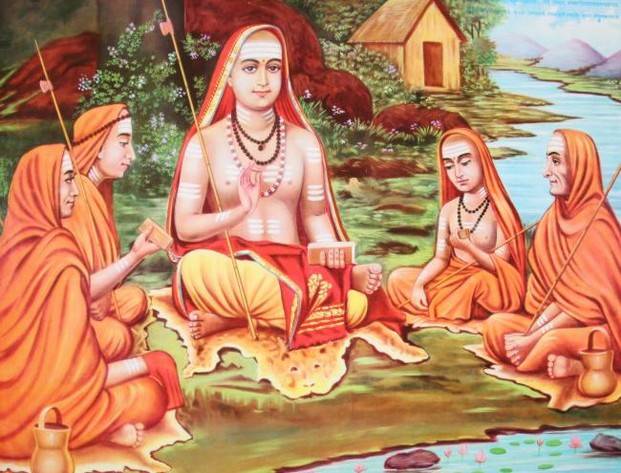 From ancient times on wards, Guru-sishya relationship existed in Bharat where mentoring of a student by a spiritual teacher is undertaken. Selfless transmission by a genuine, dedicated and committed teachers pass on the information to a student who is expected to receive the knowledge with committed, faith, devotion, respect and sincerity. The tradition of dialogue, discussion, debate, questioning, dissecting and deciphering is the hallmark of exchange of opinion. No WORD is taken for granted. Tradition of un-questioning the scriptures is unheard of this tradition. It is this kind of questioning that encouraged the freedom that is essential for the intellectual growth and survival of humanity. Just imagine how much valuable, eternal, immortal and everlasting message was rendered by Lord Krishna to Arjuna who asked a simple question about his confusion and dilemma about waging a war that might kill all his relatives and gurus?
From ancient times on wards, Guru-sishya relationship existed in Bharat where mentoring of a student by a spiritual teacher is undertaken. Selfless transmission by a genuine, dedicated and committed teachers pass on the information to a student who is expected to receive the knowledge with committed, faith, devotion, respect and sincerity. The tradition of dialogue, discussion, debate, questioning, dissecting and deciphering is the hallmark of exchange of opinion. No WORD is taken for granted. Tradition of un-questioning the scriptures is unheard of this tradition. It is this kind of questioning that encouraged the freedom that is essential for the intellectual growth and survival of humanity. Just imagine how much valuable, eternal, immortal and everlasting message was rendered by Lord Krishna to Arjuna who asked a simple question about his confusion and dilemma about waging a war that might kill all his relatives and gurus?
4. Remove the confusion and indecision.
In Gita, Lord Krishna delivers the message in order to remove the confusion and sorrow that engulfed Arjuna, who asks the question: “With a heart contaminated by the taint of helplessness, with a mind confounded as to my duty, I ask you to tell me what is assuredly good for me. I am your disciple. Instruct me who have thrown myself on your indulgence."
Lord Krishna says: Undoubtedly, O Arjuna, the mind is restless and difficult to restrain, but it is subdued by any constant vigorous spiritual practice -- such as meditation -- with perseverance, and by detachment, O Arjuna. (6.35). Lord Krishna tells Arjuna to gain clarity on any given situation, ponder over it and develop clear, calm and collective mind to do your duty with no attachment.
5. Balancing
 Samatvaṁ yoga ucyate (Gita 2.48): Equilibrium, evenness, harmony, adjustment, adaptability, unity, the blending of the subject and the object in harmony is Yoga. In everything that we do, we must be able balance between various facets of life. Balance must be maintained in our daily life with regard to work, family, leisure, friends, opportunities, children and other pursuits. Decisions must be made based on the priorities as to what we consider as important on life based on dharmic values with no expectation of rewards or fruits. Let us remember the words of Lord Krishna:
Samatvaṁ yoga ucyate (Gita 2.48): Equilibrium, evenness, harmony, adjustment, adaptability, unity, the blending of the subject and the object in harmony is Yoga. In everything that we do, we must be able balance between various facets of life. Balance must be maintained in our daily life with regard to work, family, leisure, friends, opportunities, children and other pursuits. Decisions must be made based on the priorities as to what we consider as important on life based on dharmic values with no expectation of rewards or fruits. Let us remember the words of Lord Krishna:
"Fixed in yoga, do thy work, O Winner of wealth (Arjuna), abandoning attachment, with an even mind in success and failure, for evenness of mind is called yoga"(2:48)
6. Niskama Karma
Bhagavad Gita is the source of for one’s ethics with regard to the discharge of his duty without 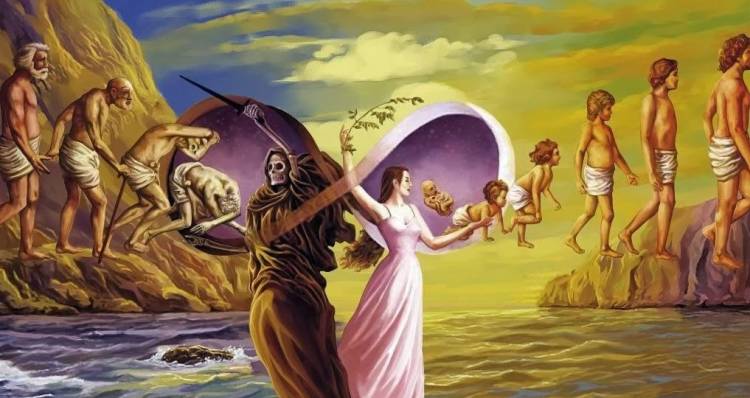 expectation to the fruits of action. Performing duty without motivation, thinking, deliberating and calculating about its outcomes tends to purify one's mind and see the value of desire less action. These concepts are vividly described in the following verses:
expectation to the fruits of action. Performing duty without motivation, thinking, deliberating and calculating about its outcomes tends to purify one's mind and see the value of desire less action. These concepts are vividly described in the following verses:
To action alone hast thou a right and never at all to its fruits; let not the fruits of action be thy motive; neither let there be in thee any attachment to inaction.(2:47).
The Gita advocates action, relentless action regardless of the rewards. It preaches the mantra of karma yoga and defines it as dexterity in action; ‘yagahe karmasu kaushalam’(Yoga is excellent at work) gives new dignity to work.
7. Karma and Reincarnation
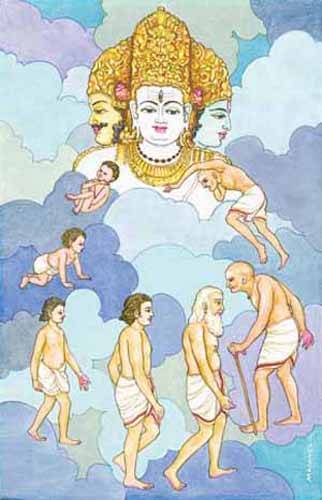 Bhagavad Gita clearly enumerates connection between karma and reincarnation. Soul reincarnates again and again depending on the actions performed when it entered the body. Individual soul is separated from the Source. This soul takes innumerable incarnations until it perfected itself and finally reunited with the Supersoul. The ultimate goal of every soul is to be released from karmic cycle. Only then the soul stops to incarnate and achieves final liberation from the cycle of samsara. Number of births a soul reincarnates depend on the kind of actions one performs in his life cycles. One can move up or down in the hierarchy of life depending on his karmas. If one performs good deeds he will be born in a more comfortable situation. If one engages in bad deeds, he will be born to bear a difficult condition. One reaps what they sow.
Bhagavad Gita clearly enumerates connection between karma and reincarnation. Soul reincarnates again and again depending on the actions performed when it entered the body. Individual soul is separated from the Source. This soul takes innumerable incarnations until it perfected itself and finally reunited with the Supersoul. The ultimate goal of every soul is to be released from karmic cycle. Only then the soul stops to incarnate and achieves final liberation from the cycle of samsara. Number of births a soul reincarnates depend on the kind of actions one performs in his life cycles. One can move up or down in the hierarchy of life depending on his karmas. If one performs good deeds he will be born in a more comfortable situation. If one engages in bad deeds, he will be born to bear a difficult condition. One reaps what they sow.
Bhagavad Gita vividly describes the journey of soul as follows:
"As the embodied soul continuously passes, in this body, from boyhood to youth to old age, the soul similarly passes into another body at death."(2.13)
"As a person puts on new garments, giving up old ones, the soul similarly accepts new material bodies, giving up the old and useless ones."(2.22).
"The soul can never be cut to pieces by any weapon, nor burned by fire, nor moistened by water, nor withered by the wind. (2.23)
At the time of death, the soul leaves the body and reenters another gross body depending on the accumulation of karma. The actions performed in the present life before death will determine the next life. The soul is permanent and the body is impermanent.
8. Stithipragna
In life many decisions are made with vagaries of mind. Mind is always changing, not stable. Decisions made without having agitated mind yields better results. Lord Krishna says that one should be able to make decision effortlessly, naturally and calmly based on the pros and cons of the situation with no attachments. One has to do sadhana to reach that state known as Stithipragna. It is the stage where one will be able to have effective control overhis Mind and the Indiriyas (sense organs). Just like a driver of Charioteer can control the horses, mind should be able to control all the sense organs. To achieve this stage, one has to be trained by a living guru and practice controlling mind under his guidance. Stithipragna is always alert, wakeful, efficient, attentive and careful. In this stage whatever we do, it is done with the full control of mind and control of all Indiriyas based on wisdom, not based on whims and fancies. Decisions must be made with no attachment, no fear and no anger. Steady mind is a prerequisite for making rational decision.
9. Respect for Freedom
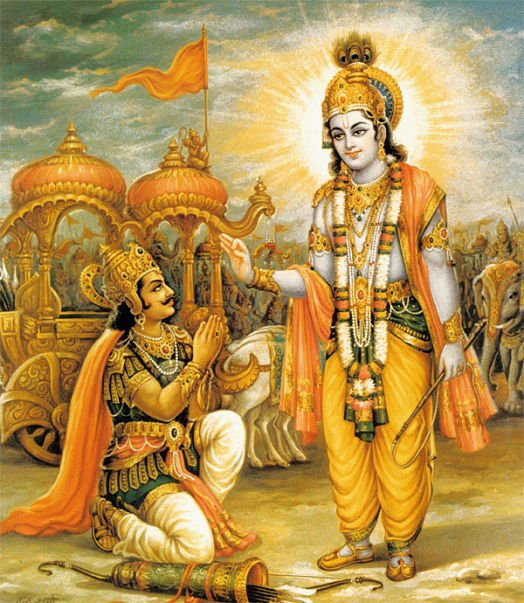 Arjuna was distraught about the potential demise of his kith and kin, his Gurus and the dynasty itself and expressed his desire not to fight. Lord Krishna realizing the despondence of Arjuna, He delivers the eternal message of individual dharma to uphold the harmony in the society. Lord Krishan talks about the Supersoul, dharma of each person, the inherent nature of creation, the karma theory, importance of devotion and knowledge, and how to remain balanced in the society faced with turmoil and turbulence. He even showed his Vishwaroopa to convince the inevitable nature of the existence itself. Arjuna is Kshatriya and his natural duty is to fight for justice. Through Viveka (discrimination). One should surrender to the Lord. Whoever engages himself under the direction of the Supreme Lord, he becomes glorious. One should not think of himself as independent of the Lord since he abides in very living creature. Lord Krishna tell Arjuna in 18:62 sloka that he should surrender to Him completely. By doing so, one will attain transcendental peace and eternal abode.
Arjuna was distraught about the potential demise of his kith and kin, his Gurus and the dynasty itself and expressed his desire not to fight. Lord Krishna realizing the despondence of Arjuna, He delivers the eternal message of individual dharma to uphold the harmony in the society. Lord Krishan talks about the Supersoul, dharma of each person, the inherent nature of creation, the karma theory, importance of devotion and knowledge, and how to remain balanced in the society faced with turmoil and turbulence. He even showed his Vishwaroopa to convince the inevitable nature of the existence itself. Arjuna is Kshatriya and his natural duty is to fight for justice. Through Viveka (discrimination). One should surrender to the Lord. Whoever engages himself under the direction of the Supreme Lord, he becomes glorious. One should not think of himself as independent of the Lord since he abides in very living creature. Lord Krishna tell Arjuna in 18:62 sloka that he should surrender to Him completely. By doing so, one will attain transcendental peace and eternal abode.
Finally, Lord says, “Thus I have explained to you, knowledge still more confidential. Deliberate on this fully, and then do what you wish to do.” The hall mark of Bhagavad Gita and Hinduism is the concept of freedom. It is only with unflinching freedom, one can excel in his talents and skills and contribute to the welfare and prosperity of the society. Any imposition by or interference from external authority would not be conducive to healthy society. That is the reason, Lord tells Arjuna that he should deliberate on His message with all his intelligence and decide by himself. No external pressure was imposed on Arjuna and Lord Krishna did not ask him to do what he wanted to him to do. Lord gave him full freedom to choose his course of action.
10. Greatness of Bhagavad Gita
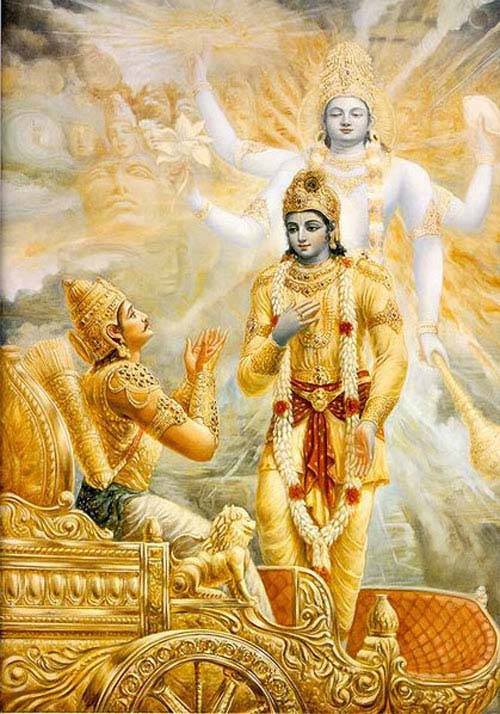 The Gita concludes with Sanjay’s assessment of the message of Lord Krishna to Dhritarashtra. Sanjay says that his hair stood up as he listened to the dialogue between Vasudeva and Arjuna through the grace of Sage Vyasa who blessed him the vision of Cosmic form of Lord Krishna. He concludes with the statement: “Wherever is Krishna the Lord of Yoga, wherever is Partha, the wielder of the bow, there prevails prosperity, victory, glory and righteousness; that is my conviction.” (18:78). This verse is called ekashloki Gita and is Sanjaya’s answer to Dhritarashtra’s question about the war. Sanjaya says indirectly that there is no doubt that the Pandavas will win the war.
The Gita concludes with Sanjay’s assessment of the message of Lord Krishna to Dhritarashtra. Sanjay says that his hair stood up as he listened to the dialogue between Vasudeva and Arjuna through the grace of Sage Vyasa who blessed him the vision of Cosmic form of Lord Krishna. He concludes with the statement: “Wherever is Krishna the Lord of Yoga, wherever is Partha, the wielder of the bow, there prevails prosperity, victory, glory and righteousness; that is my conviction.” (18:78). This verse is called ekashloki Gita and is Sanjaya’s answer to Dhritarashtra’s question about the war. Sanjaya says indirectly that there is no doubt that the Pandavas will win the war.
The Mahabharata says "sarva shaastramayii giitaa" meaning that the Gita is the essence all the scriptures. Sage Vyasa said that the Gita alone should be sung, heard and assimilated and there is no use of any other scripture when one has the Gita because it has originated from the lips of the Lord Himself. Gita Mahatyam or the Glory of Gita says that Gita contains the essence of all the four Vedas and yet its style is so simple that after a little study, anyone can easily follow the structure of the words. As a reader grows in maturity, the same words reveal more and more facets of meaning and thought process and hence the Gita remains eternally new. The Lord Himself says in the Varaha Purana that, “Where the Gita is read, forthwith comes help. Where the Gita is discussed, recited, taught, or heard, there, O Earth, beyond a doubt, do I Myself unfailingly reside.”
The Bhagavad Gita has lessons for the young and old of any caste, creed and religion and teaches the technique of perfect living. It is for all ages; and it is universal. Where the Bhagavad Gita book is 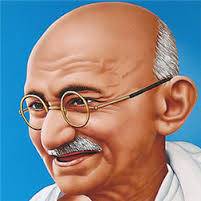 kept and the study is conducted, there all the sacred places, the sacred rivers and all holiness are present. It is also said, where the Gita is read, there help comes quickly. It has become source of inspiration to Mahatma Gandhi to lead the Independence movement and became a good friend during his imprisonment. “When doubts haunt me, when disappointments stare me in the face, and I see not one ray of hope on the horizon, I turn to Bhagavad-Gita and find a verse to comfort me; and I immediately begin to smile in the midst of overwhelming sorrow. Those who meditate on the Gita will derive fresh joy and new meanings from it every day".
kept and the study is conducted, there all the sacred places, the sacred rivers and all holiness are present. It is also said, where the Gita is read, there help comes quickly. It has become source of inspiration to Mahatma Gandhi to lead the Independence movement and became a good friend during his imprisonment. “When doubts haunt me, when disappointments stare me in the face, and I see not one ray of hope on the horizon, I turn to Bhagavad-Gita and find a verse to comfort me; and I immediately begin to smile in the midst of overwhelming sorrow. Those who meditate on the Gita will derive fresh joy and new meanings from it every day".
11. Develop Management Skills.
Business management is riddles with stress, strain, pressure and tensions. The managers have to meet the deadline and complete the task within a short period of time. The dejection and depression Arjun is typical of many managers. His frustration was typical of these managers. Arjuna says, "Mind is very restless, forceful and strong, O Krishna, it is more difficult to control the mind than to control the wind." Lord Krishna says that one must do his duty without attachment. Because, it is the ego that interferes with the task. In any business, the work involves vigorous and arduous effort to pursue the task on hand. Mind always gets agitated as we get stressed up  whenever we are involved in time bound work culture. Bhagavad Gita provides a set of guidelines, that may help achieve the goal completing the assigned task, such as perseverance, commitment, balance, clarity, motivation, self-discipline, integrity, fearlessness, steady mind and self-confidence.
whenever we are involved in time bound work culture. Bhagavad Gita provides a set of guidelines, that may help achieve the goal completing the assigned task, such as perseverance, commitment, balance, clarity, motivation, self-discipline, integrity, fearlessness, steady mind and self-confidence.
Lord Krishna says that a doer has the right to work, he does not have control over the result, he cannot afford to be inactive and success depends on selfless action only. The last chapter of Bhagavad Gita talks about the important lesson of renunciation to be an effective leader in any organization. Renunciation is a process whereby a leader must be a symbol of selfless giving and strive for the common good of the company and the society. Also abstain from selfish acts and detach from the fruits. This is very difficult to practice in today’s condition where deceit, dishonesty, selfishness, greed, and profit making dominates the world of work. As per the theory of renunciation, if the result of our efforts are successful, the entire credit should be appropriated to all the doers. Similarly, if the efforts result in failure, every doer should take the responsibility.
Business is a collective effort. It should look at the long range plans to succeed with honesty and selflessness. Philosophical outlook is important to succeed in the long run. Greed will result in a failure. Leaders should be philanthropic and self-sacrificing for the survival of a company.
12. The Curative Powers
In Bhagavad Gita, Lord Krishna’s message not only gives courage, fearlessness and strength to discharge one’s responsibility with equanimity by balancing the mind, body, and soul but it also has a number of curative powers that benefit the reader. T. R. Seshadri in his book “The Curative Powers OF the Holy Gita” gives a number of verses that can be used to cure certain types of deceases. In fact, he says that if we look at the condition Arjuna described after he decided not to fight with gurus and kinsmen is very similar to person who was about to have a heart attack. Arjuna says that  his mouth was perched, unable to stand and hold his weapon, body was shivering, hair stood up, skin burns up all over, mind was reeling, and limbs failing. Lord Krishna’s message was a cure for his heart attack like condition.
his mouth was perched, unable to stand and hold his weapon, body was shivering, hair stood up, skin burns up all over, mind was reeling, and limbs failing. Lord Krishna’s message was a cure for his heart attack like condition.
Similarly, a person with blood pressure (hypertension, hypotension), depression, impotency, neurosis, sexual disorders, stress, syphilis and venereal infections is said to benefit from chanting this verse: “The one who is not depressed in adversity or disturbed by pleasure and pain, and is devoid of attachment, fear and anger – he is indeed a steadfast one.” (Gita II – 56).
A person with AIDS, alcohol and drug addiction, blood pressure, brain disorders, depression, mental disorders, mind control, neurosis, psychic and psychosomatic illness, sexual disorders, stress, stroke and tension can be benefitted by chanting this verse: “The turbulent senses forcibly lead astray the minds of even the wise. To control them, one should sit meditation on Me. He who has his senses under control, is steadfast in his wisdom.” (Gita II – 61)
For child birth, conception, delivery, gynecological disorders, menstrual problems and pregnancy, verse 9:18 is suggested: “God is the goal, the sustainer, the witness, the abode, the refuge, the friend, the source, the destroyer, the supporter, the resting place and the imperishable seed.”
The author suggests that these verses should be chanted only in SANSKRIT to have an impact on the mind which is the source of stress and numerous deceases. It is argued that the correct understanding of verses in the Bhagavad Gita can alleviate stress and strain, which is the root cause of several modern day diseases.
13. Much More to Learn
 The sessions conducted at IIM in Indore will serve as guiding principles that can be introduced at different levels in the educational system subject to the level of knowledge. Ten modules developed by Swami Samarpananda of Ramakrishna Mission are appropriate for proper discussion to be included in the curriculum: (1) Harnessing mental energy (2) Values in leadership and administration (3) Philosophy of life and its importance (4) Acquiring excellence (5) Managing stress, (6) Duty (7) Karma Yoga; (8) Dynamics of work (9) Self-Upliftment (10) The goal supreme and looking back. Number of educational institutions have already introduced Bhagavad Gita s a course to be taught in numerous countries.
The sessions conducted at IIM in Indore will serve as guiding principles that can be introduced at different levels in the educational system subject to the level of knowledge. Ten modules developed by Swami Samarpananda of Ramakrishna Mission are appropriate for proper discussion to be included in the curriculum: (1) Harnessing mental energy (2) Values in leadership and administration (3) Philosophy of life and its importance (4) Acquiring excellence (5) Managing stress, (6) Duty (7) Karma Yoga; (8) Dynamics of work (9) Self-Upliftment (10) The goal supreme and looking back. Number of educational institutions have already introduced Bhagavad Gita s a course to be taught in numerous countries.
Finally, the Lord says, He is dearest to me who imparts this knowledge to earnest spiritual students. Study of the Gita is a great yajna or sacrifice because the student offers his ignorance to be burnt up in the fire of knowledge. Even those who listen to the Gita with faith in the Lord reach the land of the meritorious, the world of peace and joy, for the reaction of their past misdeeds will not act upon them.
History was made
Sri Ganapathy Sachchidananda Swami has made a history by inspiring, encouraging, guiding and blessing 43 children of ages 6 thru 14 to memorize all 700 verses of Bhagavad Gita and chant in His presence. On July 17, 2016 these children chanted Bhagavad Gita without looking at the book sitting for more than four hours creating vibrations and spreading the energy waves across the space. These children’s lives have changed forever as these verses have permeated their body, mind 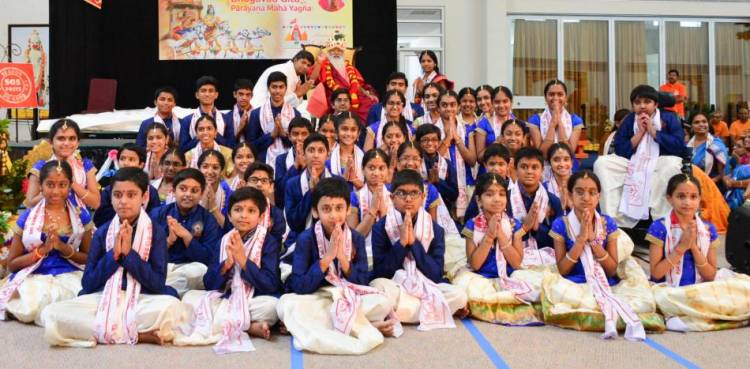 and soul. It is also time to remember that Lord resides in each of these verses thereby that Lord Krishna will be there with them and in them. By memorizing, they have absorbed the eternal message, improved their intelligence and expanded their memory bank. The power of the Sanskrit and vibrations created by chanting the mantras (verses), would live with them forever. Bhagavad Gita will help them to face numerous roadblocks with little difficulty. The eternal universal message will guide them throughout their lives. Bhagavad Gita will equip them with a lifelong friend who travels with them wherever they go. It never fails them. Many scholars, researchers, philosophers, politicians reaped the benefit in their daily pursuits as well as their academic pursuits. By commanding the children to learn Bhagavad Gita, Sri Swamiji instilled curiosity in them, helped them to memorize all 700 verses of Bhagavad Gita, implanted courage in them, infused confidence, helped expand their memory power, and shaped their personalities for life. With Sri Swamiji’s blessings, these kids will be the role models for the other children and their parents to pursue their innate talent and become ambassadors to the richness of Sanatana dharma.
and soul. It is also time to remember that Lord resides in each of these verses thereby that Lord Krishna will be there with them and in them. By memorizing, they have absorbed the eternal message, improved their intelligence and expanded their memory bank. The power of the Sanskrit and vibrations created by chanting the mantras (verses), would live with them forever. Bhagavad Gita will help them to face numerous roadblocks with little difficulty. The eternal universal message will guide them throughout their lives. Bhagavad Gita will equip them with a lifelong friend who travels with them wherever they go. It never fails them. Many scholars, researchers, philosophers, politicians reaped the benefit in their daily pursuits as well as their academic pursuits. By commanding the children to learn Bhagavad Gita, Sri Swamiji instilled curiosity in them, helped them to memorize all 700 verses of Bhagavad Gita, implanted courage in them, infused confidence, helped expand their memory power, and shaped their personalities for life. With Sri Swamiji’s blessings, these kids will be the role models for the other children and their parents to pursue their innate talent and become ambassadors to the richness of Sanatana dharma.
DONATIONS
As many of you know that SaveTemple Office was opened in June 2012 in Hyderabad. Office is located in Khairatabad. Four full time employees are working on the update of our website, Aalayavani Web Radio, Aalayavani magazine, conducting various activities to preserve and protect Hindu Temples and Culture. Our budget is approximately 2 lakh rupees per month. We request your generous donation to conduct activities to promote unity among Hindus and restore the glory of Hinduism.
Please DONATE. Your donations are appreciated to continue the work.
NOTE: GHHF is exempt from federal income tax under section 501 (c) 3 of the Internal Revenue code. Our tax ID # 41-2258630
Donate at: https://www.savetemples.org (click ‘Donate’ button on right side).
Where to send your DONATIONS?
Global Hindu Heritage Foundation
14726 Harmony Lane, Frisco, TX 75035.
Your donations are tax deductible. Our Tax ID: # 41-2258630
Any questions, call: Prakasarao Velagapudi
Please subscribe to Save Temples Telegram channel at https://t.me/savetemples
GHHF Board of Directors:
Prakasarao Velagapudi PhD, ( cell), ( home); (; ); Satya Dosapati (); (); (); Vinay Boppana (248-842-6964); (); (); (); (); (); (); (); (); Murali Alloju MD (703-953-1122); Veeraiah Choudary Perni MD (330-646-8004); Vishnu Kalidindi MD; Srivas Chebrolu MD; Avadesh Agarwal; Sudheer Gurram MD; Rajendrarao Gavini MD; Srinath Vattam MD, Ravi Gandhi, Ramadevi Vadali, Kishore Kancharla, Ranjith Kumar Rikkala; Satish Kodeboyina; and Dr. Ghazal Srinivas, Honorary Brand Ambassador.
GHHF Dallas Core Group
(); Srinivas Pamidimukkala (); (); (); (); (); (}; (); (); (); (); (); (); (); (); (); (); Sitaram Panchagnula (714-322-3430); Vasanth Suri (408-239-3436); Phani Aduri (214-774-2139); Konda Srikanth (214-500-5890); Siva Agnoor (214-542-661).



















